The Doberman Husky Mix, also known as a Dobersky or Siberian Pinscher, is a crossbreed between a Doberman Pinscher and a Siberian Husky. This breed is gaining popularity due to its striking appearance and unique personality.
The Doberman Husky Mix is known for its intelligence, loyalty, and high energy levels, making it an excellent choice for an active and experienced owner. However, owning a Doberman Husky Mix requires a lot of time, attention, and training, as this breed can be challenging to handle without proper care.
In this article, we will explore the characteristics and traits of the Doberman Husky Mix to help you determine whether this breed is the right dog for you.
Brief overview of Doberman Husky Mix
| Weight | 35-100 lbs |
| Height | 20 to 27 inches |
| Ear Type | Folded (Doberman feature) or Erect (Husky feature) |
| Size | Medium to Large |
| Coat Type | Short, manageable coat (taking on the side of Doberman’s), or dense coats (taking the side of Huskies) |
| Coat Color | Dark Golden Hue, Black (if the dominant gene comes from the Doberman); Broad range of colors such as brown, white, and black (if the dominant gene comes from the Husky) |
| Amount of Shedding | Minimal to Extreme shedding for longer shaggy coats |
| Eyes | Blue (taking on the Husky side), or gray or amber (taking the Doberman side) |
| Life Expectancy | 13-14 years |
| Temperament | Friendly, Social, Loyal to the family, and loves attention |
What is a Doberman Husky Mix?

A Doberman Husky Mix, a blend of Doberman Pinscher and Siberian Husky, combines the best traits of both breeds, offering a loyal, intelligent, and energetic companion. While their personality can vary, early behavior correction and ample exercise are key to managing their high energy levels and ensuring a happy, well-tempered dog.
Parent Breeds of Doberman Husky Mix
To truly understand the Doberman Husky mix, it’s essential to know about its parent breeds. These two breeds have distinct characteristics in terms of appearance, size, and dietary needs. While they share some behaviors, their differences require careful consideration. Let’s start by exploring the unique traits of the parent breeds before we delve into the mix itself.
Origins and history of Doberman
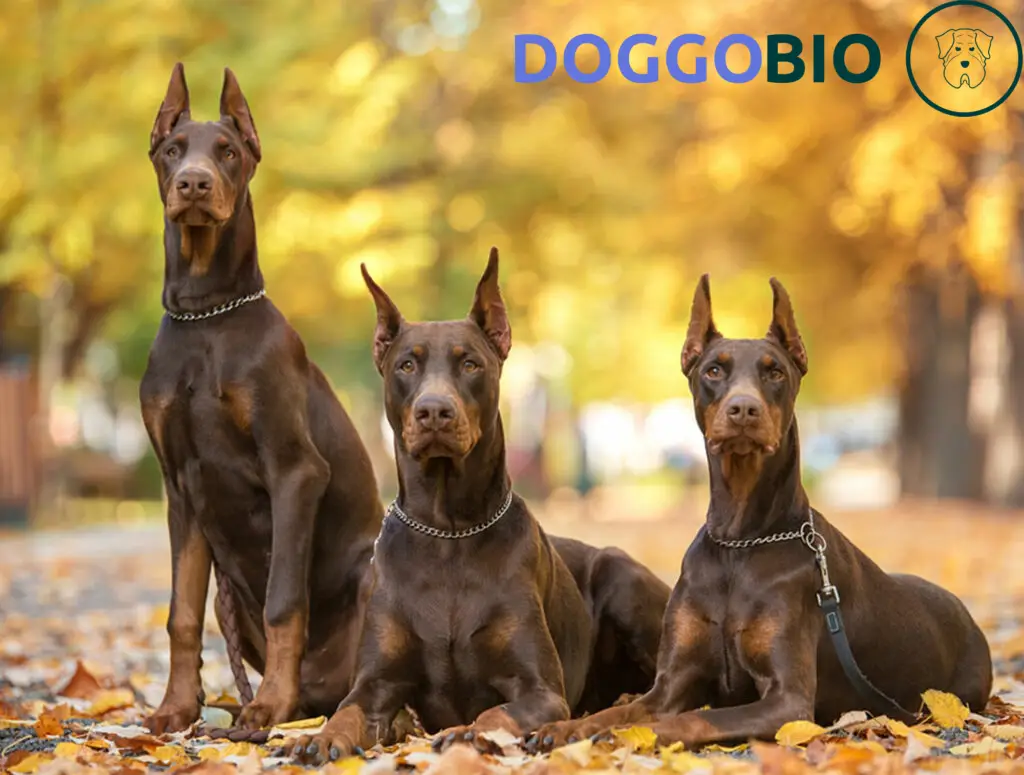
The Doberman Pinscher originated in 19th-century Germany, where it was bred to protect tax collectors. While their historical role has evolved, they’ve retained their bravery, loyalty, and affectionate nature. Today, they continue to excel in personal protection roles.
This remarkable breed holds the 17th position on the American Kennel Club’s list of most beloved dog breeds in the USA. Doberman Pinschers are large dogs, weighing between 60 to 100 pounds and standing 24 to 28 inches tall. They are known for their energy and intelligence, requiring ample exercise and mental stimulation.
While they share protective instincts with other breeds like Rottweilers and German Shepherds, Doberman Pinschers have a unique and enduring legacy as icons of strength, both physically and emotionally
Origins and history of Siberian Husky

The Siberian Husky, originating from Siberia’s harsh terrain, has a long history as a sled dog, transporting goods and people between tribes. While they still serve this role, they’ve also become popular family pets, ranking 14th in popularity by the American Kennel Club.
Known for their loyalty, mischievousness, and friendly nature, Siberian Huskies are beloved entertainers in the canine world. They weigh between 35 to 60 pounds and stand 20 to 23 ½ inches tall, requiring around 90 minutes of daily exercise due to their boundless energy.
Their charm has led to the creation of designer dog mixes like the Rottsky, Husky Golden mix, and Husky German Shepherd mix, each inheriting the husky’s spirit and charm.
What Does a Doberman Husky Mix Look Like?
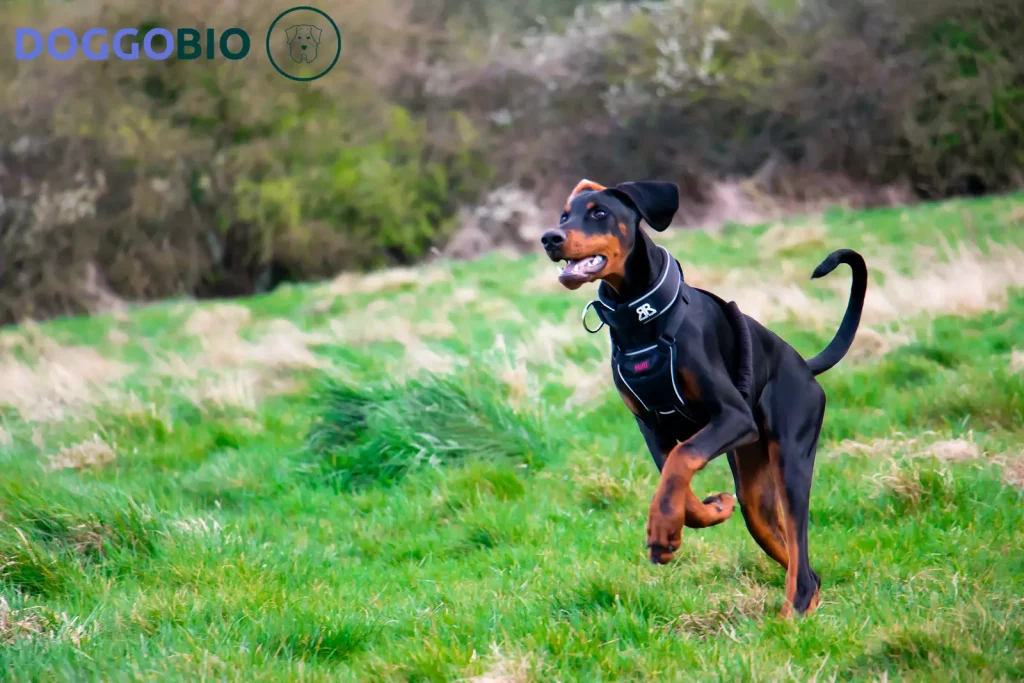
A Doberman Husky mix boasts a unique appearance, blending features from both parent breeds. They typically have a serious yet playful expression with an infectious Husky grin. Their eyes can be brown, blue, or one of each. Expect large, triangular ears, a long muzzle, and a distinctive lengthy tail that sets them apart
Size, height, and weight
This furball will be a heavyweight, tipping the scales anywhere from 40 to 90 pounds and standing tall between 22 and 26 inches. Don’t be fooled by their size, as they will be a lean, mean, athletic machine, and will have the physique to prove it.
| Age | Weight (Males) | Weight (Females) | Height (Males) | Height (Females) |
| 3 months | 20 – 50 pounds | 20 – 45 pounds | 12 – 18 inches | 12 – 17 inches |
| 6 months | 50 – 65 pounds | 45 – 55 pounds | 18 – 20 inches | 17 – 19 inches |
| 9 months | 65 – 85 pounds | 55 – 80 pounds | 20 – 22 inches | 19 – 22 inches |
| 12 months | 86 – 100 pounds | 81- 90 pounds | 22 – 27 inches | 22 – 25 inches |
Coat colors and types
The Doberman Husky mix has a double coat that requires regular maintenance, especially during shedding season. Their medium-length, straight fur can leave your home looking like a fur storm hit it. However, the effort is rewarded when you see their coat shine in the sun.
In terms of colors, they can come in a variety of combinations inherited from their parents, ranging from classic black and rust to striking grey and white. They may also have unique markings like the Husky’s mask or the Doberman’s eyebrows, making each one a distinct and eye-catching pup.
Temperament and Personality
The Doberman Husky mix has a loyal and protective temperament, similar to the Pomsky. They prioritize their family’s safety and will alert you to potential dangers. They are social like Huskies and warm up to strangers.
This blend of sociability and protectiveness results in a balanced temperament. However, they can be needy, potentially leading to separation anxiety. Early training and a family that can be with them most of the day are essential.
These dogs are talkative, energetic, and playful, making them great companions for activities like hikes and games. If you’re ready for an affectionate and entertaining dog, the Doberman Husky mix could be an ideal choice.
Is Doberman Husky good fit for families?
3 Reasons Why You Shouldn’t Get a Doberman Husky Mix
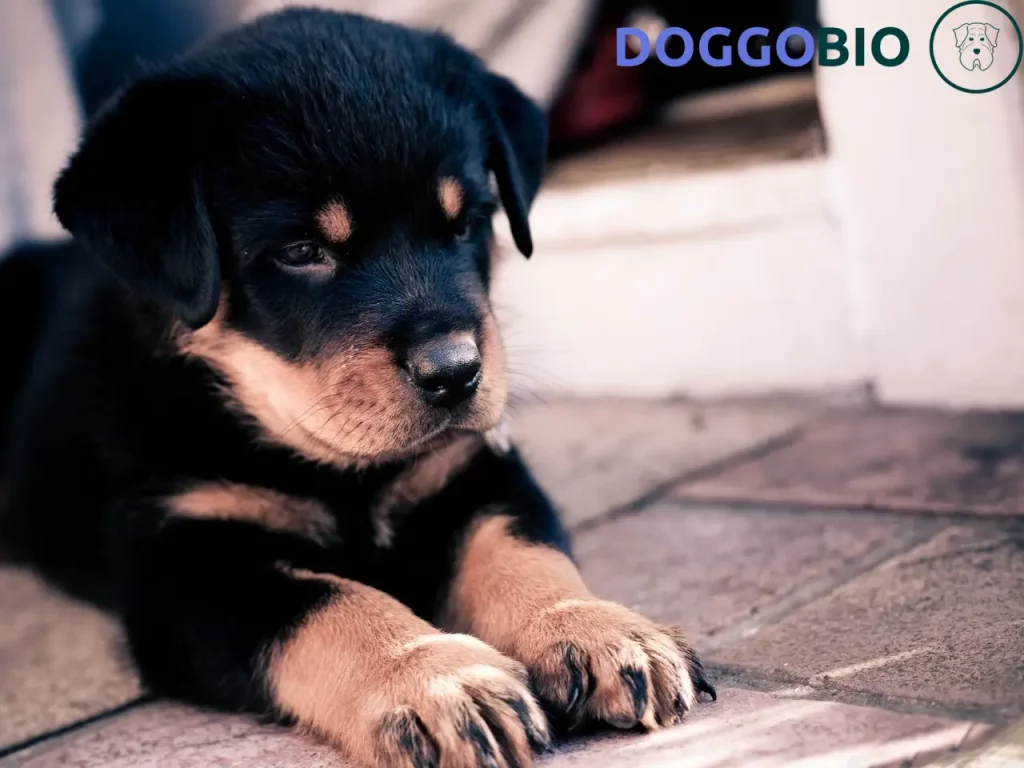
- Active Companion: These dogs are energetic and enjoy various activities, making them great companions for active individuals or families who love outdoor adventures.
- Loyal and Protective: Doberman Husky mixes are known for their loyalty and protective nature, making them ideal for families with children. They’ll always prioritize the safety of your loved ones.
- Social and Intelligent: With their social and intelligent personalities, these dogs easily adapt to different situations and get along well with people and other pets. They make wonderful forever companions.”
3 Reasons Why You Should Get a Doberman Husky Mix
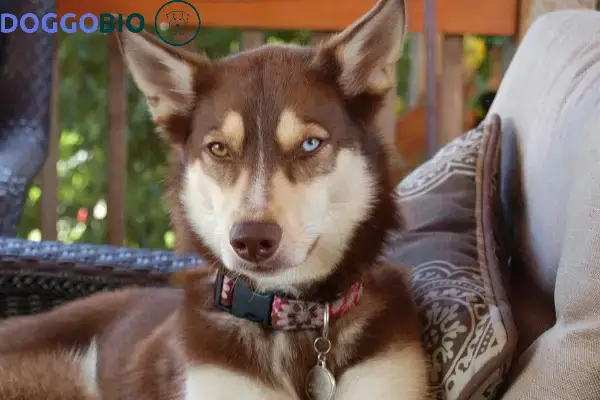
- Ideal Family Companions: Doberman Husky mixes blend the best qualities of both breeds, offering loyalty, intelligence, bravery, and sociability, making them perfect family pets.
- Active Lifestyle Partners: These dogs are highly trainable and enjoy socializing, making them great for outdoor adventures or simply spending time in your backyard. They’re a perfect match for active individuals.
- Loyal Guardians: With their protective instincts and vigilance, Doberman Huskies provide a sense of security, making them an excellent choice for families with children. They’ll always watch over your loved ones, making them feel safe and cherished.”
Are Doberman Husky Mixes affectionate dogs?
YES! Due to their Husky temperament, Doberman mixed with Huskies are considered to be affectionate and loving dogs. It’s a common misconception that Dobermans are aggressive, but in reality, they are sweet and people-oriented dogs.
In fact, you might be pleasantly surprised to find that your Dobsky has inherited the ‘velcro’ mentality of the Doberman, which means they will always want to be close to a particular member of your family. This strong desire to be near their favorite human is a testament to the affectionate nature of these dogs.
Training
- Early and consistent training is essential, particularly to address overprotective tendencies. Socialization with various animals and people helps them understand not everyone is a threat.
- Obedience training is crucial for setting boundaries and establishing your role as the leader. Many resources are available for effective obedience training.
- Crate training is beneficial, especially for dealing with separation anxiety. Choose an appropriate crate to provide your Dobsky with a safe and secure space when alone.
These training measures ensure your Dobsky becomes a well-behaved and obedient companion, preventing potential behavioral issues.
Exercise Requirements
The Doberman Husky Mix, like many of their Siberian Husky counterparts, demands a significant amount of exercise each day, clocking in between 60 and 90 minutes of vigorous activity.
To keep up with this energetic pooch, their human counterparts must be ready to engage in strenuous physical activity. They are not the kind of dog that can lounge around all day on the couch – if They don’t get their daily exercise, they will wreak havoc and let their mischievous side show.
Living Conditions
To keep this high-spirited dog happy and healthy, Doberman Husky Mix requires plenty of indoor and outdoor space, with a backyard surrounded by tall fences to prevent them from wandering off. If they take after their Husky parent, they’ll have no trouble scaling those fences.
The Dobsky can coexist with other household pets, but early socialization is key to ensuring they remain amicable. The good news is that, thanks to their Doberman parent’s calmer nature, Doberman Husky Mix is also an excellent match for families with children. However, responsible supervision is still necessary to ensure a harmonious coexistence.
Grooming and Cleaning
- The Dobsky’s thick double coat requires regular brushing, but the frequency depends on whether it leans more towards the Doberman or Husky parent’s fur.
- A bath every few months is sufficient, but be cautious not to overuse shampoo to maintain their coat’s natural oils.
- Clean their ears regularly to prevent bacterial buildup.
- Monitor their eye health and schedule regular check-ups due to potential eye issues.”
| Grooming Needs | Grooming Frequency |
| Brushing | Daily. |
| Bathing | Once or twice a month. |
| Ear Cleaning | Weekly. |
| Nail Trimming | As needed. |
| Teeth Brushing | Three to four times a week. |
Are Doberman Husky Mixes Hypoallergenic?
Unfortunately, the Doberman Husky Mix is not hypoallergenic, and they do shed a lot, especially during the spring and fall months.
So, if you or someone in your household has allergies, you might want to think twice before getting a Dobsky. However, regular grooming and brushing can help reduce shedding, so keep that in mind.
Food and Diet
Feeding your canine companion is a critical aspect of their lives, and it’s essential to provide them with the healthiest and best food options possible. However, getting the right food for your Husky and Doberman mix can be a daunting and costly task. To ensure you’re doing it right, you need to have a full-proof feeding plan in place for your beloved pups.
- Portion Control: Be mindful of their size and breed to avoid overfeeding, which can lead to health issues.
- Balanced Diet: Include fruits and vegetables for vitamins and fiber. Antioxidants and anti-inflammatory ingredients promote overall health.
- Consider a Raw Diet: Raw food can be beneficial.
- Moderation: Limit treats to prevent obesity.
- Hydration: Ensure they have access to plenty of water.”
Common Health Issues
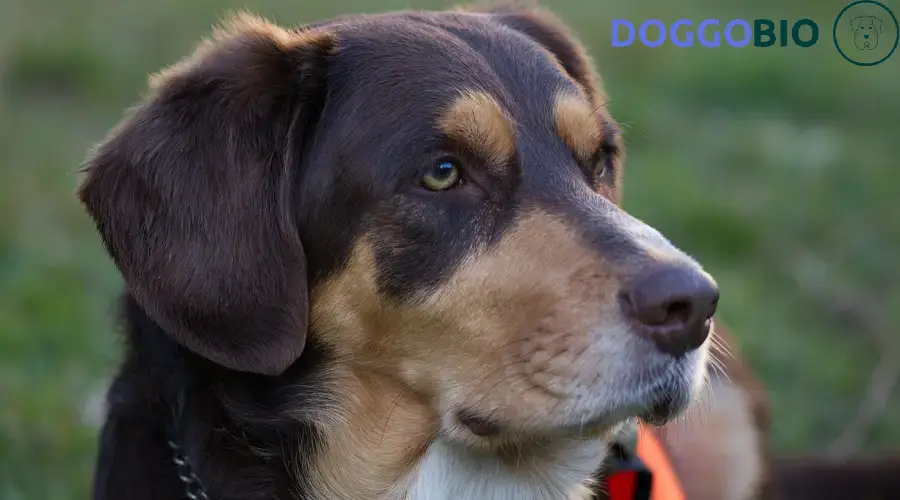
Hold on to your hats, folks, because when it comes to the Doberman Husky Mix’s health, it’s a mixed bag of possibilities! Since this furry friend comes from two different breeds, there are various health concerns to keep an eye out for.
1. Glomerulonephritis
Glomerulonephritis is an inherited kidney disorder causing glomeruli inflammation, leading to severe issues. Symptoms may include muscle atrophy and limb inflammation, requiring specialized diets and medication for treatment. Early medical attention and proper management can mitigate its impact on health.
2. Hip & Elbow Dysplasia
Hip and elbow dysplasia, two conditions that are often seen in most dogs, are caused by the abnormal development of the affected joints. If left untreated, they can cause immense discomfort and even lead to paralysis in the later stages of the dog’s life. So, keep an eye out for any signs of discomfort or difficulty when your Dobsky is moving around.
3. Eye Problems
The Dobsky may be predisposed to various eye concerns, as their parents are also prone to them. These include Progressive Retinal Atrophy, Retinal Dysplasia, and Cataracts. Regular eye cleaning and monitoring are crucial to ensure their eye health is in tip-top shape. Don’t turn a blind eye to any unusual symptoms and take him to the vet immediately if you suspect any eye issues.
4. Epilepsy
Epilepsy is a neurological disorder that is inherited by dogs, and is characterized by sudden and recurrent seizures. These seizures can occur at any time, and can be extremely distressing for both the dog and its owner. Unfortunately, there is no known cure for epilepsy, and the only way to prevent seizures is through lifetime medication.
5. Gastric-Dilitation Volvulus
Gastric-Dilitation Volvulus or bloat, is a life-threatening condition that is commonly observed in large and deep-chested dogs like the Doberman Husky Mix breed. The disease happens when the stomach twists, trapping the air inside and causes immense pressure.
This usually takes place after consuming too much food or water, followed by intense physical activities like running or jumping. When the condition is left untreated, the dog can die within hours.
6. Von Willebrand’s Disease
The Dobsky, a Doberman Husky mix, is generally healthy. However, they may be prone to Von Willebrand’s Disease, a condition that affects blood clotting. Vigilant monitoring and care can ensure a long, happy life of up to 14 years. Keep an eye out for other health issues like hip and elbow dysplasia and eye concerns.
How Long Does A Doberman Husky Mix Live?
With the proper attention and care, a hybrid of Siberian Husky and Doberman Pinscher can anticipate a longevity of approximately 13 to 14 years.
How Much Is a Doberman Husky Mix?
Although the details regarding the cost of this particular pooch are scant, anticipate forking out a sum of money between $500 and $1,000.
However, the amount you pay hinges on multiple variables, including the canine’s pedigree, lineage, the location of the breeder, and the level of demand at that particular time. It’s critical to conduct thorough research to identify a trustworthy breeder who can offer you a puppy that is healthy and content.
Is Doberman Husky Mix the right Dog for me?
Are you the right fit for a Doberman Husky Mix? This breed is perfect for those with a lively and dynamic lifestyle. If you’re the kind of person who loves to lounge around all day, this is not the dog for you.
These dogs are not fans of inactivity and require daily runs and even hiking trips to keep them content.To keep a Doberman Husky Mix satisfied, you’ll need to provide them with an average of 14 to 15 miles of running distance each week. If you can’t commit to that, you’ll need to hire a dog walker to prevent any destructive behaviors from occurring in your home. Don’t take their exercise needs lightly or you might be dealing with a chaos.
List of dogs that are similar to Doberman Husky Mix
- Husky-Dalmatian Mix
- Husky-French Bulldog Mix
- Husky-Great Dane Mix
- Husky-Cane Corso Mix
- Husky-Rottweiler Mix
- Husky-Blue Heeler Mix
- Doberman-Pitbull Mix
- Doberman-Chihuahua Mix
- Doberman-Cane Corso Mix
- Doberman-Great Dane Mix
- Fawn Doberman
Conclusion
In conclusion, the Doberman Husky Mix is a unique and striking breed that combines the intelligence, loyalty, and energy of both the Doberman Pinscher and the Siberian Husky.
While this breed can make a wonderful companion for experienced and active owners, it is important to understand that owning a Doberman Husky Mix requires a significant commitment of time, attention, and training.
By considering the temperament, health concerns, and exercise needs of this breed, you can make an informed decision about whether the Doberman Husky Mix is the right dog for you. With proper care and training, this breed can bring years of joy and companionship to its owner.

Pingback: Great Dane Husky Mixes: Personality and Characteristics 2023
Pingback: Rottweiler Husky Mix: Discover the Secrets to Nurturing 2023
Pingback: Dalmatian Husky Mix: Interesting Facts You Need to Know 2023
Pingback: Cane Corso Husky Mix: Interesting Fact You Need to Know 2023
Pingback: French Bulldog Husky Mix: Dive into the Interesting World 2023
Pingback: Miniature Husky: Dive Deep into the Interesting World 2023
Pingback: Doberman Chihuahua Mix: Courage & Charm Combined 2024